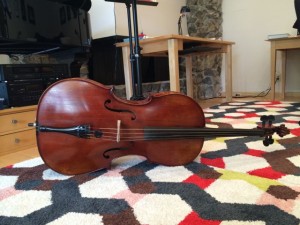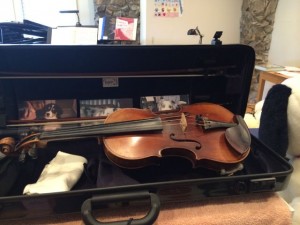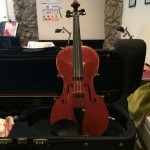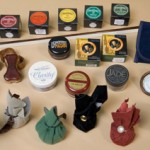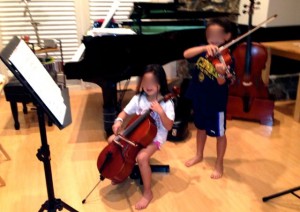Here, I’m sharing my experience on what I did with my violins as well my two cents on what to focus on when transforming a violin’s sound into either a rich deep like cello, a Phantom’s tenor voice or an angel’s voice like a soprano. The important elements for me are the bow and strings in the process of transforming both my old and young violin sound into a beautifully rich and deep yet bright sound just like a lyric soprano or tenor. Bows and strings are like a married couple that need to be able to accompany each other. And a bow will need to match the violin to obtain harmony; thus, compatibility is essential. However, what comes as the first step of sound change, bow or stings, is a personal preference. Most people will make sure the bow and violin harmonize with each other before changing anything else on the violin. Also, I hunted for my bow before I began my string search journey. The matched bow with a violin gave me the potential sound that I set out looking for.
Sound – It’s subjective because everyone has different hearing and different expectations for sound quality: deep, rich, vibrant, bright, loud, soft, etc. In addition, there are environmental differences as well solo vs. orchestral, small concert hall vs. outdoor big concert hall such as Hollywood bowl. Thus, it’s important to decide what sound you are seeking and the planned use of the instrument. As a soloist myself (not performing regularly, and no orchestral), I tend to like a mellow, soft and more dark and rich sound for A, D, and G strings but seek a mellow, soft and clean sound, not bright or crispy, for the E string.
Bow – Different shapes project a different sound. In general an octagon shape is able to give a bold, assertive 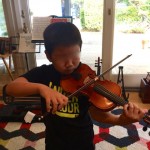 sound as opposed to a round shape which gives a softer, mellower sound. I started on a student grade octagon bow and moved to a better quality handmade octagon bow. It took me a year to find my current bow which has a round shape and is old, handmade and has a well balanced weight from tip to frog. My bowing technique was still entry level (only learning violin for about 2 years), but it gave me a soft, not so edgy sound that I was looking for. As my bowing technique continues to improve, the bow continues to give the mature sound that I’m have been longing for.
sound as opposed to a round shape which gives a softer, mellower sound. I started on a student grade octagon bow and moved to a better quality handmade octagon bow. It took me a year to find my current bow which has a round shape and is old, handmade and has a well balanced weight from tip to frog. My bowing technique was still entry level (only learning violin for about 2 years), but it gave me a soft, not so edgy sound that I was looking for. As my bowing technique continues to improve, the bow continues to give the mature sound that I’m have been longing for.
String – Strings are the trickiest attribute in the sound transformation process in my experience. It simply is because there are far too many different makers as well as types of string sets in the market, a wide assortment of materials, and not to mention a huge range in price. Dominant brand strings are the most commonly used ones and claim to delivery a deep rich sound, but they don’t present such a result for my violins. The violin can react differently with different type of strings and materials, for example: Dominant vs. Pirastro Evah Pirazzi, and Steel core vs. Synthetic core string. Therefore, it required lots of trial and error, patience, and time to achieve your sound goal.
My 100+ year old violin, has a very deep, rich tone for both A and G, but on the high position, the G string tends to sound mushy; as for the E string, it is very bright, crispy which it’s too sharp for my ears. I’m also looking for resonance between all strings in addition to a deep, warm, yet vibrant sound. After trying a few different sets of strings, the Obligato string set is able to produce the quality that I’m seeking, and it brightens up the tone on the high position on the G string, but I’m still not satisfied with the E string. Therefore, I decided to use Obligato on A, D, and G while using a Jargar Loop End Steel Medium E to give the clean, bright, and not too crispy sound like a lyric soprano. (Note: I have tried Dominant, Tonica, and regular Pirastro E strings). The combination of Obligato and Jargar complements and is able to provide the resonance between all the strings in particular the A and E.
Since a young/new violin contains a loud, assertive, and bold quality, not only would I like to keep that quality but also would like to add a warm, rich sound to balance out the crispy, sharp tone. Tonica’s Medium grade cuts the crispy, loud sound yet still keeps the clean, vibrant, bold quality. This violin has the most harmonic sound between A string and E string, the resonant sound with perfect 5th or 3rd echoing in the air is what I’m dying to keep. Therefore, I chose Evah Pirzaai to add a rich, clean sound as well as mellow down the loud, assertive sound, and it pairs up very well with Tonca.
Rosin – Recently I discovered that rosin can be a contributor sound quality; in addition, I didn’t know the price range could be so broad, and it has its lifespan. How did I found that out? My kids were in a fight over Pirastro Goldflex rosin.
In my 20+ years of violin playing, I particularly favor light rosin, and my husband used dark rosin. I found the dark rosin too sticky, requiring a bit of effort to control the bow to avoid a scratchy sound. I have been using The Original Bernardel Rosin, and Pirastro Rosin and Pirastro Goldflex Rosin. And Goldflex was my favorite but it tends to gives a lot of dust powder.
Since most professional players noted that rosin can provide different sound, I figured that I might as do some study on the type of rosin, the maker of the rosin and how they would contribute to the sound differently as well as the proposed usage for each type of rosin. My research led me to these makers: Bernardel Rosin, Kaplan, Pirastro Gold Rosin, Pirastro Eudoxa Rosin, Andrea Bang, Liehenzeller. In the end, it was a debate between Andrea Bang and Liehenzeller. The deciding factors were:
- Reviews on Andrea Bang’s rosin cover easy to break- one drop, it’s gone and I can’t allow that to happen because I got two young players at home.
- Local music stores and the maker’s website and many reviews from profession and non-professional players claim the Liehenzeller gives a warm, deep rich sound, and no much of dust power remains on the violin after hours of playing.
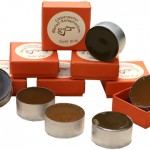 At first, I couldn’t distinguish the difference because my bow still has remains of my old rosin, but its sticker than I like. After one week of use, I begin to notice it helps the bow grip the string better, even on the high position on G, and it has a clean, vibrant yet warm sound on the E string. And I am finally beginning to fall in love with it now. But I must admit it takes some effort with bowing technique to bring out the best sound. I felt the materials of this rosin have their mysterious ways to affects bow and my bowing techniques.
At first, I couldn’t distinguish the difference because my bow still has remains of my old rosin, but its sticker than I like. After one week of use, I begin to notice it helps the bow grip the string better, even on the high position on G, and it has a clean, vibrant yet warm sound on the E string. And I am finally beginning to fall in love with it now. But I must admit it takes some effort with bowing technique to bring out the best sound. I felt the materials of this rosin have their mysterious ways to affects bow and my bowing techniques.
Of course, there are many other attributes that affect the sound such as pegs, the shape of the bridge, the placement of the bridge, and the weather.
Bottom line, all elements are determined by personal preference as well as how they interact with each in order to engineer the sound you desire. Keep in mind that those elements mentioned in this post are “enhancement tools” to improve and perfect the sound that you want from the instrument. The techniques of bowing, precision of intonation, understanding the music phase and being able to translate them in addition to adding your own color through playing determine what kind of sound that your instrument can truly generate.
I believe the same thoughts and process apply to all string instruments, and I shall begin my journey for transforming the sound of a cello soon.
